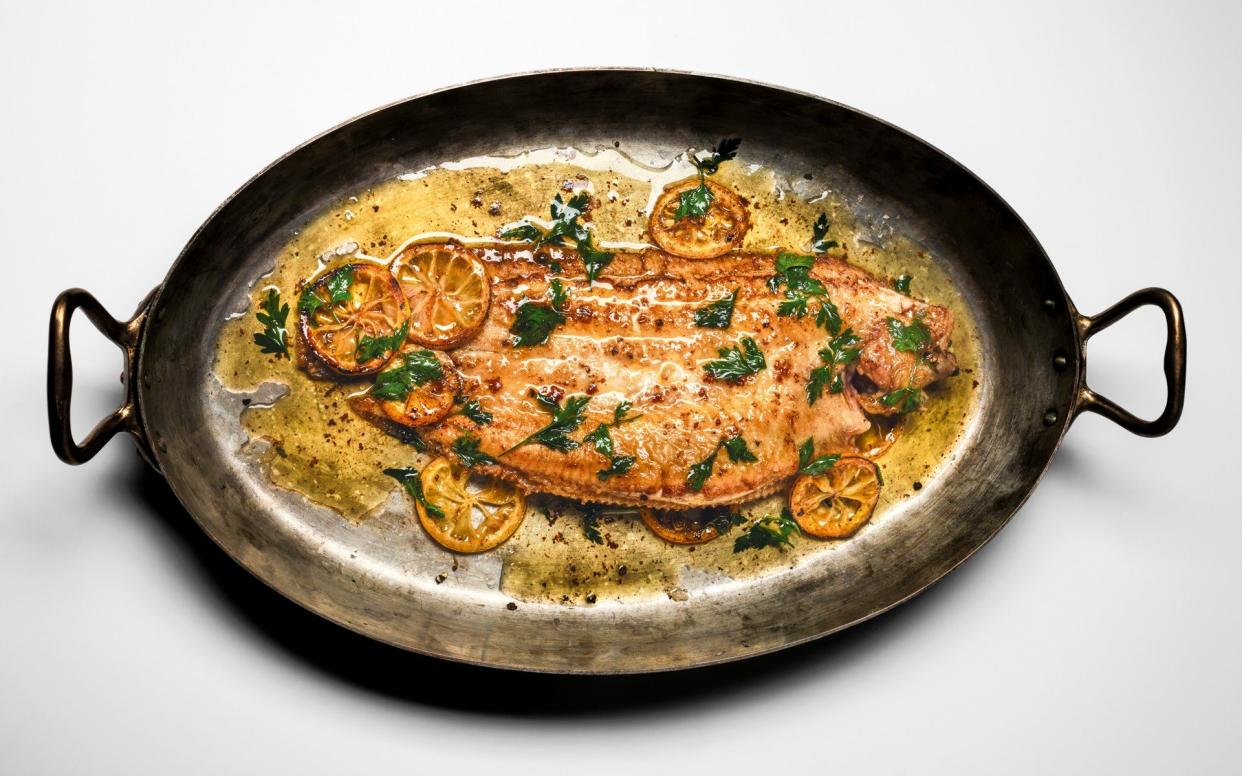Dover sole with lemon butter sauce recipe

Sole was the most prized of all sea fish, rivalled only by turbot during the 19th and early 20th centuries. The size of the sole you served or ate reflected your wealth and standing in society. In the 1914 edition of Le Répertoire de la Cuisine, the handbook of all aspiring chefs to the gentry, there were 340 different ways of presenting sole fillets. There are, however, more humble ways of preparing sole, one of the best being the French classic sole à la meunière (sole in the style of the miller’s wife) – a straightforward dish that relies on the quality of the sole, the cooking time and the balancing of the lemon juice and browned butter.
Timings
Prep time: 10 minutes
Cook time: 25 minutes
Serves
4
Ingredients
2 whole Dover soles (400-450g), trimmed and skinned
25g plain flour, seasoned
4 tbsp vegetable oil
60g butter (clarified* if possible, if not use unsalted butter)
2 tbsp fresh parsley, chopped
1 lemon, finely sliced
1 tbsp freshly squeezed lemon juice (or more)
Method
Pat the soles dry with kitchen paper, then dip in the seasoned flour to coat both sides evenly. Shake off the excess flour.
Heat half of the oil in a large, heavy well-seasoned or non-stick frying pan. A small cube of bread should instantly sizzle when dropped into the pan.
Add one of the soles (fleshiest side down first), then lower the heat slightly to moderate and add a small knob of butter. Fry for 4-5 minutes, without moving the fish, until golden brown underneath.
Carefully turn the fish over and cook for a further 4-5 minutes, until golden brown and cooked through.
Slide on to a warm serving dish (collecting the buttery juices in a bowl) and keep warm.
Repeat with the second fish, using the remaining oil and butter. When cooked, slide this fish on to a second warmed serving dish, retaining the butter in the pan.
Pour the collected buttery juices from the first fish into the frying pan and heat until it all becomes a delicate brown and smells ‘nutty’ (beurre noisette), then allow it to cool slightly and stir in the parsley, lemon slices, and lemon juice to taste. Season.
Spoon the contents of the pan over the plated soles, and serve immediately with boiled new potatoes.
*Clarified butter reaches a higher heat than ordinary butter when all the milk solids that could burn are removed. It is ideal for cooking delicate fish. An easy way to clarify butter is to put a block of butter in a pan and add a cupful of water. Heat slowly until the butter is melted and frothy. Pour it into a bowl, then cool and chill. The clarified butter will rise to the top as it cools. When the butter has set hard, the solidified layer can be lifted off the watery milk solids underneath and used for cooking. Discard the liquid.
Recipe from The Gourmand’s Lemon: A Collection of Stories and Recipes (Taschen, £40)






